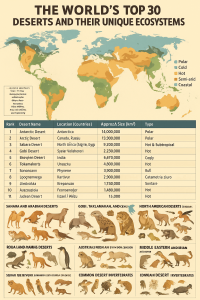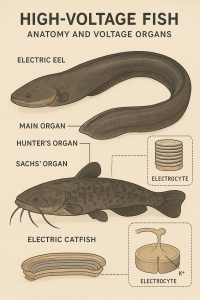What is CO2? The Simple Truth
Carbon dioxide, or CO2, is a colorless, odorless gas that exists naturally in Earth’s atmosphere. At its most basic level, CO2 is a molecule made of one carbon atom bonded to two oxygen atoms. Think of it as nature’s currency in the cycle of life.
When you breathe out, you release CO2. When you burn wood, coal, oil, or gas, you create CO2. When plants grow, they absorb CO2 from the air and use it to build their stems, leaves, and roots through photosynthesis. In simple terms, CO2 is both a natural part of Earth’s atmosphere and a byproduct of burning fossil fuels and other carbon-based materials.
The real meaning of CO2 in today’s world extends beyond chemistry. It has become a symbol of humanity’s industrial progress and simultaneously our greatest environmental challenge. CO2 is essentially the invisible thread connecting our modern lifestyle, energy consumption, economic development, and the planet’s climate stability.
The Importance of CO2: Why We Need It
Essential for Life on Earth
Carbon dioxide plays several critical roles that make life possible:
Plant Growth and Food Production: Plants need CO2 for photosynthesis, the process by which they convert sunlight, water, and CO2 into oxygen and glucose. Without CO2, there would be no plant life, and consequently, no food chain to support animals or humans. Every crop we grow, from rice paddies in Asia to wheat fields in North America, depends on CO2.
The Natural Greenhouse Effect: CO2 acts as a thermal blanket for Earth. Without any CO2 in the atmosphere, our planet would be a frozen wasteland with an average temperature around -18°C (0°F) instead of the current 15°C (59°F). This natural greenhouse effect has allowed life to flourish for millions of years.
Ocean Chemistry: CO2 dissolves in ocean water, playing a role in marine chemistry that affects countless sea creatures, particularly those that build shells and skeletons from calcium carbonate.
Carbon Cycle Balance: CO2 is a fundamental component of Earth’s carbon cycle, moving between the atmosphere, oceans, soil, and living organisms in a natural balance that has sustained life for eons.
Economic Importance
In our industrial world, the production of CO2 is intimately tied to economic activity. Manufacturing, transportation, electricity generation, and heating all typically involve burning fossil fuels, which releases CO2. Economic development, particularly in emerging nations, has historically required increasing energy consumption, which has meant increasing CO2 emissions.
The Disadvantages of CO2: The Climate Crisis
While CO2 is essential in the right amounts, too much of it creates serious problems.
Climate Change and Global Warming
The primary disadvantage of excess CO2 is its role as a greenhouse gas. Since the Industrial Revolution began around 1750, human activities have increased atmospheric CO2 concentrations from about 280 parts per million (ppm) to over 420 ppm today. This enhanced greenhouse effect traps more heat in the atmosphere, leading to global warming.
The consequences include:
Rising Global Temperatures: The planet has warmed by approximately 1.1°C since pre-industrial times, with accelerating impacts in recent decades. This may sound small, but even small temperature changes have massive effects on global systems.
Melting Ice and Rising Sea Levels: Glaciers and polar ice sheets are melting at unprecedented rates. Sea levels have risen about 20 centimeters since 1900 and are accelerating, threatening coastal cities and island nations.
Extreme Weather Events: Higher temperatures fuel more intense hurricanes, longer droughts, more severe heatwaves, and heavier rainfall events. The frequency and intensity of these extreme weather events have increased measurably.
Ocean Acidification: Excess CO2 absorbed by oceans forms carbonic acid, making seawater more acidic. This threatens coral reefs, shellfish, and the entire marine food web, potentially devastating fishing industries worldwide.
Environmental and Ecological Disruption
Ecosystem Disruption: Species are being forced to migrate to cooler regions or higher elevations. Many cannot adapt quickly enough, leading to local extinctions and disrupted ecosystems.
Agricultural Challenges: While some crops may initially benefit from higher CO2 levels, the accompanying heat stress, water scarcity, and extreme weather increasingly threaten global food security.
Water Scarcity: Changing precipitation patterns and melting glaciers that feed major rivers affect billions of people who depend on these water sources.
Economic and Social Costs
The disadvantages extend to human society with enormous economic costs from climate-related disasters, crop failures, infrastructure damage, and forced migration. Climate change disproportionately affects poorer nations and communities with fewer resources to adapt, creating issues of climate justice and potentially destabilizing entire regions.
China’s Climate Plans and Actions
As the world’s largest emitter of CO2 (responsible for approximately 30% of global emissions), China’s climate policies are crucial to global efforts.
China’s Commitments
Carbon Neutrality by 2060: President Xi Jinping announced in 2020 that China aims to achieve carbon neutrality before 2060, meaning the country would balance its emissions with carbon removal.
Peak Emissions Before 2030: China has pledged that its CO2 emissions will peak before 2030 and then begin declining.
Renewable Energy Expansion: China is investing heavily in renewable energy, already leading the world in solar panel manufacturing and installation, wind power capacity, and electric vehicle production.
China’s Approach
China’s strategy includes:
- Building massive solar and wind farms across the country
- Developing ultra-high voltage transmission lines to move renewable energy from remote areas to cities
- Promoting electric vehicles with subsidies and mandates (China is the world’s largest EV market)
- Improving energy efficiency standards across industries
- Planting billions of trees to increase carbon absorption
- Developing carbon trading markets to incentivize emission reductions
Challenges China Faces
Despite these commitments, China continues to build coal-fired power plants to meet its enormous energy demands and support economic growth. The tension between development needs and climate goals remains significant. China’s huge manufacturing sector, which produces goods for global consumption, makes emission reductions particularly challenging.
United Nations and Global Climate Action
The UN has been central to coordinating international climate efforts for decades.
Key UN Climate Frameworks
The Paris Agreement (2015): This landmark accord brought 196 countries together with a goal of limiting global warming to well below 2°C above pre-industrial levels, with efforts to limit it to 1.5°C. Each country submits Nationally Determined Contributions (NDCs) outlining their emission reduction plans.
Conference of the Parties (COP): These annual UN climate conferences bring nations together to assess progress and strengthen commitments. Recent COPs have focused on implementation, climate finance, and accelerating action.
Intergovernmental Panel on Climate Change (IPCC): This UN body provides scientific assessments on climate change, its impacts, and potential solutions, forming the scientific basis for policy decisions.
What Countries Are Planning
European Union: The EU aims for carbon neutrality by 2050 and has set interim targets including a 55% emission reduction by 2030 (compared to 1990 levels). The bloc is implementing comprehensive policies including carbon pricing, renewable energy mandates, and a phase-out of combustion engine vehicles.
United States: The U.S. has committed to cutting emissions 50-52% below 2005 levels by 2030 and achieving net-zero emissions by 2050. This includes significant investments in clean energy, electric vehicles, and grid modernization through legislation like the Inflation Reduction Act.
United Kingdom: The UK has legally binding targets to reach net-zero by 2050 and has made significant progress, reducing emissions by over 40% since 1990 while growing its economy.
India: As the world’s third-largest emitter, India has pledged to reach net-zero by 2070 and to generate 50% of its electricity from renewable sources by 2030. India faces the challenge of lifting millions out of poverty while transitioning to clean energy.
Developing Nations: Many developing countries have ambitious climate plans but require financial and technical support from wealthier nations. The UN framework includes provisions for climate finance to help these nations adapt to climate impacts and develop cleanly.
Global Climate Finance
Wealthy nations committed to providing $100 billion annually to developing countries for climate action, though this target has been consistently missed. The debate over climate finance, loss and damage compensation, and technology transfer remains contentious but critical to global cooperation.
The Path Forward
The world stands at a critical juncture. The science is clear: we must dramatically reduce CO2 emissions within this decade to avoid the most catastrophic climate impacts. This requires:
Rapid Energy Transition: Shifting from fossil fuels to renewable energy sources like solar, wind, and potentially nuclear power.
Electrification: Converting transportation, heating, and industrial processes to run on clean electricity.
Enhanced Carbon Sinks: Protecting and restoring forests, wetlands, and other ecosystems that absorb CO2.
Innovation: Developing new technologies for carbon capture, storage, and removal, as well as sustainable alternatives to emission-intensive processes.
International Cooperation: Climate change is a global problem requiring global solutions. No single country can solve it alone.
Individual Action: While systemic change is essential, individual choices about consumption, transportation, diet, and energy use collectively matter.
Conclusion
CO2 is neither purely good nor purely bad—it is essential for life but dangerous in excess. Understanding CO2 means recognizing it as a molecule critical to Earth’s natural systems that human activity has pushed out of balance. The plans laid out by China, the UN, and countries worldwide represent humanity’s recognition of this imbalance and our attempt to restore it.
The challenge is immense and urgent. The window for limiting warming to 1.5°C is rapidly closing, and every fraction of a degree matters for the severity of impacts. Yet there is also reason for hope: renewable energy is now often cheaper than fossil fuels, technologies are improving rapidly, and global awareness has never been higher.
The story of CO2 in the 21st century will ultimately be the story of whether humanity can balance its needs for development and prosperity with the imperative of planetary stewardship. It is a test of international cooperation, technological innovation, and collective will. The decisions made in the coming years will shape the world for centuries to come.







Be First to Comment